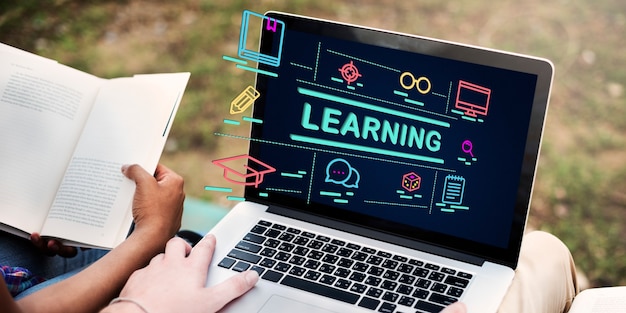What is Gamification in Education?
Gamification involves applying game-design elements in non-game contexts to boost motivation and engagement. In education, it means integrating aspects of games—like points, badges, and leaderboards—into the learning process. This approach turns traditional lessons into interactive, immersive experiences that can significantly increase student involvement.
You might be wondering, "How does adding game elements to lessons make a difference?" Well, think about it this way: games are inherently engaging. They offer challenges, rewards, and a sense of accomplishment. By embedding these elements into educational content, students are more likely to be motivated and engaged. It’s a bit like turning a boring task into an exciting adventure.
“Gamification transforms the learning experience by making it more interactive and engaging. It leverages our innate desire for achievement and competition to enhance learning outcomes.” – Dr. Jane Smith, Educational TechnologistHow Game-Based Learning Platforms Enhance Engagement
The Power of Points, Badges, and Leaderboards
Imagine a classroom where students earn points for completing assignments, unlock badges for mastering topics, and see their names climb the leaderboard as they progress. This scenario is not just wishful thinking but a reality made possible through game-based learning platforms. These elements create a dynamic environment where learning becomes a series of challenges and achievements.
Points serve as a form of instant feedback, showing students how well they are doing. Badges provide recognition for their efforts and accomplishments, while leaderboards introduce a friendly competition that can drive students to put in their best effort. All these components work together to make learning more engaging and fun.
Personalized Learning Through Game Mechanics
One of the most exciting aspects of game-based learning is its ability to tailor experiences to individual needs. Just like in a game where players can choose different paths or levels, educational games can adapt to each student’s skill level and learning pace. This personalization ensures that every student is challenged appropriately, which keeps them motivated and prevents frustration.
The Role of Learning Analytics in Education
What is Learning Analytics?
Learning analytics is the process of collecting and analyzing data about students' learning behaviors and outcomes. It involves examining various data points—like quiz scores, time spent on tasks, and participation levels—to gain insights into how students are learning and where they might need additional support.
You might ask, "Why is analyzing this data important?" The answer lies in the power of information. By understanding how students interact with learning materials, educators can make informed decisions about how to improve the educational experience. It’s like having a roadmap that guides you to the most effective teaching strategies.
Data-Driven Decisions for Refining Game Mechanics
By combining learning analytics with game-based learning, educators can fine-tune their approaches to better meet students’ needs. For instance, if data shows that students are consistently struggling with a particular game level, it might indicate that the difficulty needs adjusting. Or if certain game features are highly engaging, educators can emphasize those elements in future lessons.
“Data-driven insights are essential for refining educational games and ensuring that they meet the needs of all students. Learning analytics provides the feedback necessary to continuously improve the learning experience.” – John Doe, Learning AnalystCase Studies
-
Improving Engagement in K-12 Education. In a recent study conducted at Lincoln Elementary, the implementation of a gamified learning platform resulted in a remarkable increase in student engagement. The use of game elements like rewards and progress tracking made students more enthusiastic about their assignments. Teachers reported a noticeable boost in participation and a significant improvement in overall academic performance.
-
Higher Education: Personalized Learning Journeys. At State University, a gamified approach combined with learning analytics was used in a freshman math course. The platform provided personalized feedback based on students’ performance data, allowing for targeted interventions. As a result, the course saw a substantial decrease in dropout rates and an increase in student satisfaction.
Future Trends in Gamification and Learning Analytics
The Integration of Artificial Intelligence
Looking ahead, artificial intelligence (AI) is poised to further revolutionize gamification and learning analytics. AI can enhance personalization by analyzing student data in real-time and adjusting game mechanics to better suit individual needs. Imagine a system that not only tracks your progress but also predicts the types of challenges that will keep you most engaged.
Expanding Beyond Traditional Education
While gamification and learning analytics have primarily been used in traditional educational settings, there’s potential for these techniques to extend into corporate training, professional development, and even everyday learning experiences. The possibilities are endless as more industries recognize the value of engaging and data-driven educational approaches.
Personalization in Gaming
Just as gamification and learning analytics tailor educational experiences to individual needs, the world of online casino slots is also embracing a similar trend. Modern slot games use sophisticated algorithms to create personalized experiences for players, adapting game features based on their play history and preferences. This personalization ensures that each gaming session feels unique and engaging. For instance, if you enjoy classic fruit machines or themed slots, you'll find that Fancy Fruits slot offers a slot game perfectly suited to your tastes. The technology driving these games mirrors the personalized learning journeys crafted through educational analytics, highlighting how tailored experiences can enhance engagement in any gaming scenario. So, if you're curious about experiencing a slot game designed with your preferences in mind, check out the mentioned game and see how personalization can elevate your gaming adventure.
Conclusion
Incorporating gamification and learning analytics into educational strategies is more than just a trend—it’s a transformative approach to enhancing learning outcomes. By making education more interactive and data-driven, these tools create an environment where students are not only engaged but also empowered to achieve their full potential.
As we continue to explore and refine these methods, the future of education looks increasingly dynamic and tailored to individual needs. The key takeaway? By leveraging the power of games and data, educators can craft learning experiences that are both effective and enjoyable.
So, whether you’re a teacher looking to spice up your lessons or a learner eager to see how new technologies can enhance your education, gamification and learning analytics offer a promising path forward. Dive in, explore, and see how these innovative approaches can make a difference in your educational journey.







